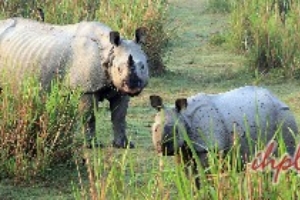Gir National Park is among India’s best wildlife sanctuaries and national parks in terms of wildlife flora and fauna. Flora in Gir National Park consists of a mixed deciduous forest interspersed with semi-evergreen and evergreen trees, scrub jungle, large grasslands, and rocky hills. It is the largest dry deciduous forest in Western India. The forest remains dry most of the year with scrub trees like babul and a few flowering trees, which are sparse and short.
You will find a distinct vegetation belt along the main rivers and streams. The variety of trees you can see in the deciduous forest are Teak, Flame of the Forest tree, Acacia, Banyan, Zizyphas, Jamun, Tendu, and Dhak. The Teak bearing areas constitute nearly half of the total vegetation area. And that’s why the Gir forest is called “Very Dry Teak Forest.”
The other half of the forest consists of non-teak forests, including Simal, Samai, Khakhro, Asundro Jambu, Umro, Amli, Vad, and kalam. These mostly come under evergreen and broadleaf trees.
The flora in Gir includes various species like the Jambu, Karanj, Umro, Vad, Kalam, Charal, Siris, and Amli. These broad-leaved trees provide a cool shade and moisture content to the region. As part of the afforestation plan, Prosopis and Casuarina have been planted in the coastal borders of Gir.
There are also areas of the park with open scrub and savannah-type grassland. The flora in Gir is particularly significant since the forest of Gir is an important biological research area with several scientific, educational, aesthetic, and recreational values.
If you visit the place, you will find the Hiran flowing all year round. The other important rivers flowing in the location are Datardi, Godavari, Machhundri, Raval, Shetrunji, and Shingoda. Of these, Hiran, Machhundri, Raval, and Shingoda are the four rivers that have dams. These water resources provide good nourishment for the growth of such a wide variety of flora in the region.
Overall, these riverine landscapes are great for catching wildlife ecosystem views in the park.
If you look back into Gir National Park’s history, the park was once a hunting ground for the Britishers, who the Indian Kings invited during the 19th century. Hunting the tigers through the deep teak forests was considered auspicious and was thrilling by those princely hunters.
Later, with the efforts of the government, forest department, and NGOs, the place experienced a significant increase in the population of Asiatic lions along with the population and variety of flora and fauna over the years. As a result, thousands of wildlife enthusiasts and researchers visit the park every year as a wide variety of flora is a sight unlike any other.












